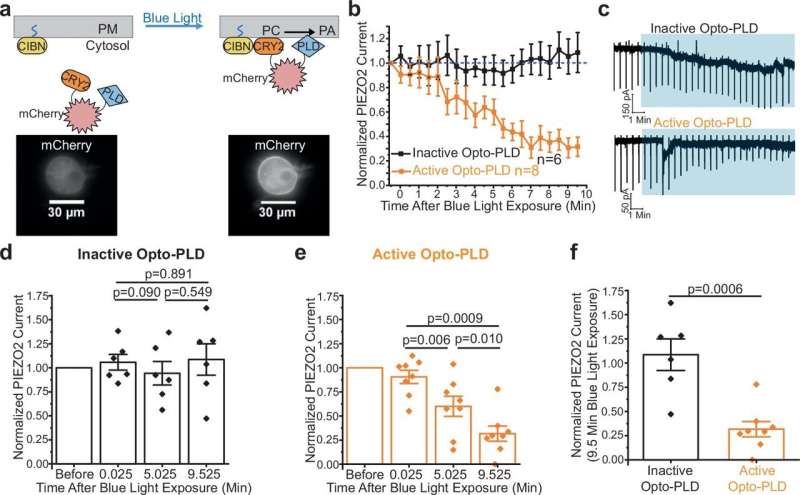This article has been reviewed according to Science X's editorial process and policies. Editors have highlighted the following attributes while ensuring the content's credibility:
fact-checked
peer-reviewed publication
trusted source
proofread
Researchers discover new way to control the sense of touch

Rutgers researchers have found a new way to manage the receptors that control the sense of touch, which could lead to treating chronic pain more effectively.
"Identifying a natural molecule that specifically reduces pain sensitivity offers hope for new therapeutic strategies in the management of pain," said Tibor Rohacs, a professor in the Department of Pharmacology, Physiology and Neuroscience at Rutgers New Jersey Medical School and a member of the Rutgers Brain Health Institute. "Our goal is to translate these findings into effective treatments that improve the quality of life for people suffering from chronic pain."
A natural molecule called phosphatidic acid can reduce the activity of certain touch-sensing ion channels in the body, according to the study published in Nature Communications. The study's first author is Matthew Gabrielle, a doctoral student in the laboratory of Tibor Rohacs at Rutgers New Jersey Medical School.
Researchers found that increasing the levels of phosphatidic acid in cells makes them less sensitive to touch. This finding was confirmed through experiments on sensory neurons and tests in mice, where the animals became more sensitive to touch when the formation of phosphatidic acid was inhibited.
"This finding adds to a growing body of evidence suggesting that lipids are key regulators of somatosensation," said Gabrielle, referring to the body's ability to perceive sensations such as touch, temperature and pain.
"By targeting the natural pathways that regulate these channels, we can develop more targeted and effective pain treatments that could be especially useful for conditions involving inflammatory pain, where current pain relief options are often inadequate."
More information: Matthew Gabrielle et al, Phosphatidic acid is an endogenous negative regulator of PIEZO2 channels and mechanical sensitivity, Nature Communications (2024). DOI: 10.1038/s41467-024-51181-4





















